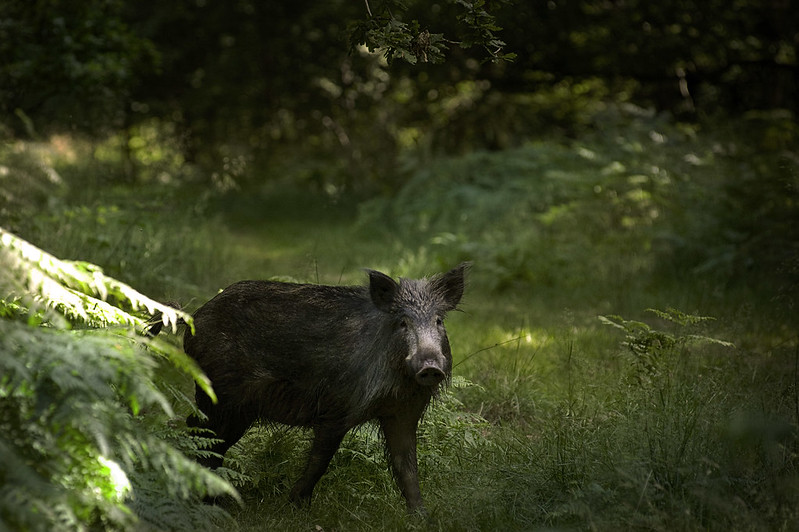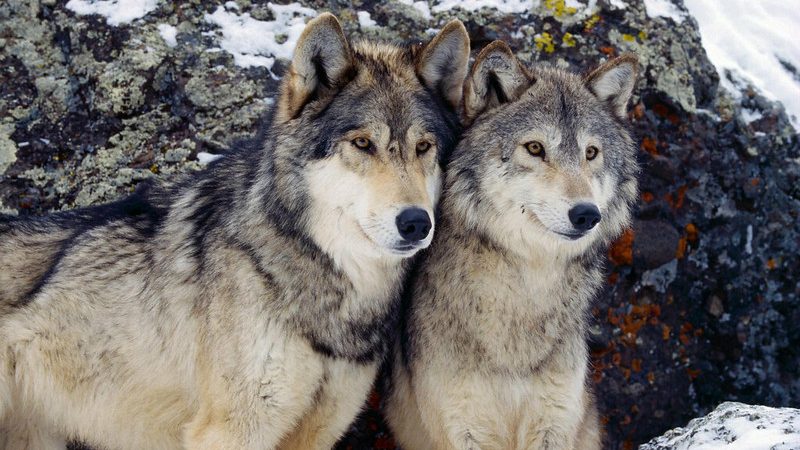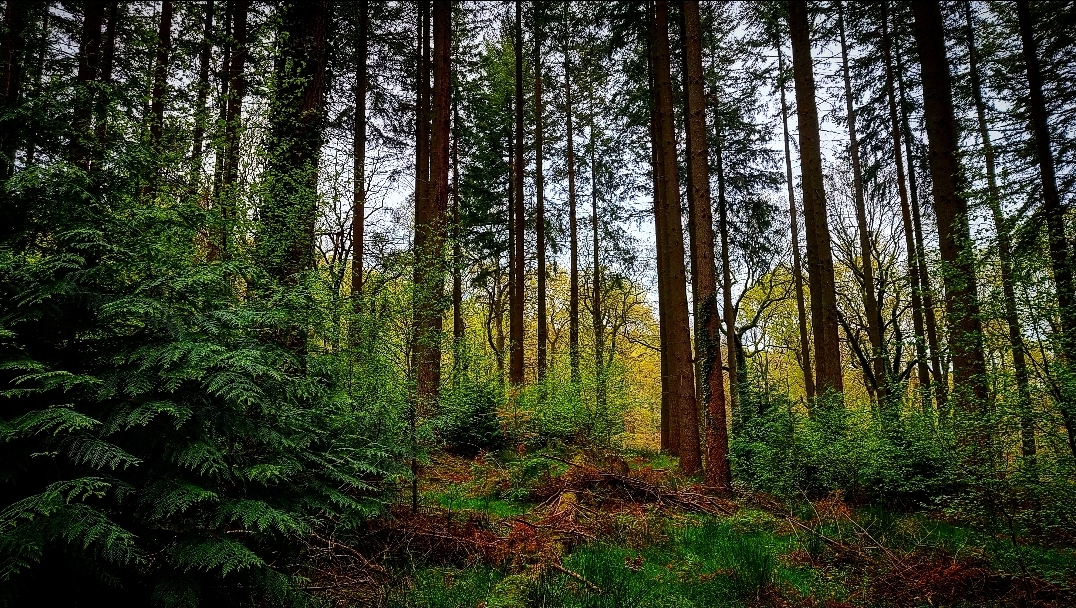Britain is on a journey with rewilding but re-introduced species like the wild boar are largely unwelcomed. Can the country overcome its zoophobia?
It’s a sunny afternoon and the forest is alive with birdsong. A pair of pied flycatchers, back home after wintering in West Africa, fly past a large stretch of land that seems to have been turned over. The culprits, sleeping deep inside the wilderness, are unaware that their enthusiastic nocturnal activity helps bring these woodlands to life.
It was here in the Forest of Dean, that naturalist Ed Drewitt had a close encounter with a fearless mother boar and her young ones who sneaked up on him to make sure he didn’t mean harm. “She’s very sneaky. She’ll get a good eye of you or sniff of you and go ‘Huff! Huff!’ and that is the signal for the baby boars to run off.”
“It’s an amazing experience because you think she’s heading off and actually she’s not. She’s coming to check you out. Work out whether you are a danger or not.”

The turned-over soil is the result of the wild boar’s “rooting behaviour”. The animals use their snouts as a shovel to turn up the ground to look for roots, seeds, or small invertebrates to eat. The process breaks down over-grown vegetation and allows seeds buried deep in the soil to sprout. Back in February, when the turning was freshly done, this land would have appeared barren. But four months later, there are little seedlings sprouting from the soil.
“They have pushed the bracken back and have allowed the seeds of plants buried in the soil to come up and create a slightly different habitat and environment. Previously this time of the year the bracken was smothering,” says Ed.
Wild boars are called woodland engineers and for fair reasons. They help with soil drainage by breaking up the soil . They help to put the leaf and leaf matter back into the soil which helps the worms and soil invertebrates. Their scat is organic that benefits the dung beetles. Birds like blackbirds, thrushes, and robins benefit because where the ground has been freshly turned, they can come and feed on worms. When they wallow, to cool themselves with mud baths, they create small woodland pools overtime where birds can feed and newts and frogs can spawn.
This unique trait of the wild boars makes them a promising candidate for re-introduction in ecological habitats that need restoration. The original wild boars in the UK were hunted to extinction 600 years ago. However, with the surge in the popularity of the concept of rewilding, their return is being planned and welcomed in many parts of the country.
British woodlands have evolved to have wild boar. Interacting with the soil, interacting with trees and wildlife
Ed Drewitt, Freelance Naturalist
Although not a new concept, rewilding became synonymous with George Monbiot’s controversial book, “Feral” in which he makes a passionate case for rewilding in the UK. It is a process of restoration of ecosystems by letting nature take over and take care of itself. Rewilding can be done by helping restore natural processes or bringing back missing key species that can help in habitat recovery and rehabilitation.
“The idea of rewilding has been around for quite a long time but its only now that people are getting confirmation of climate change and biodiversity loss that is making people think that they have got to do something,” says Ed.
But despite being an ideal rewilding species, the wild boars have been a subject of intense debate. The fact that they are prolific breeders and their perception as a dangerous animal challenges the status of their existing populations and talks of their re-introduction. There have been reports of boars attacking pet dogs that are off the lead. In rare cases, rogue boars have also attacked people. It’s not uncommon for a mother boar to be aggressive if the young ones are around. However, these instances are sporadic and most animals are shy and avoid human presence.
“I have been going out now for years, showing people boar. They run a mile from you. When you do hear stories about them being dangerous or people being scared, I think that is more people’s perception. It might be that they have a dog off the lead or it may be fear playing on people’s minds,” says Ed.

The boars that reside in the Forest of Dean today, came from two groups of farm-raised boars that were released in 1999 and 2004 in the area and eventually proliferated. Their re-introduction in the woodland is also controversial because of their status as a non-native species that was illegally released. Though the original wild boars were native to Britain, the current population is classed differently because it came from commercial farm stock. However, their nature and habits are very much the same as their ancestors.
“From an ecological point of view, they are doing the same thing as the native wild boar. You have to remember that the wild boar has been around for thousands if not millions of years. And British woodlands have evolved to have wild boar. Interacting with the soil, interacting with trees and wildlife,” says Ed. “So here in the forest of dean I feel like the wild boar has come back to carry on some of those processes that it would have done hundreds of years ago”

Like the boar, the beaver is another promising candidate for re-introduction in aquatic habitats. Beavers also act as ecosystem engineers and modify wet landscapes. They build dams and create channels that can control flooding and improve water quality. When they fell trees and bushes, it diversifies the habitat to boost biodiversity. They are a “keystone species” which means that their absence would either be catastrophic for the ecosystem or will alter it significantly.

The beavers were also hunted to extinction and subsequently reintroduced under the policy of rewilding. Their growing numbers have however stirred a debate, especially in Scotland where the animals have done damage to the crops of some farmers. Even though the beaver is a protected species in Scotland, farmers can apply for a license to kill the animals if they damage the crop. 87 beavers were killed in 2019 with this license.
The uncanny parallel between the boar and beavers facing hostility from people seems to be indicative of a larger, underlying issue of attitude towards rewilded species. “I think its human nature,” says Ed, “that when there is an animal that has been absent for so long, that people don’t know much about, particularly if they come into urban areas, people start seeing them as a threat. They don’t know how to behave around them.”
The apprehension of reintroducing previously extinct animals intensifies with larger carnivores like wolves and lynx. Wolves were persecuted and hunted across Europe and were wiped out of Britain in the 18th century. Lynx survived a little longer before succumbing to habitat loss and hunting around 1300 years ago. Both these carnivores can play a crucial role in controlling deer population and overgrazing but the prospect of their return provokes serious opposition from the farming community.

“Wolves could do a pretty good job of keeping the red deer under control in Scotland,” says Ed. “It’s got vast tracks of land to do that with but when you bring up the idea of rewilding and wolves, there is a very negative reaction around this. We don’t know how to behave around wolves.”
There has to be a cultural shift if we want a Britain that has any wildlife left in it in the next 50 to 100 years.
Ed Drewitt
A lot of fear about rewilding larger animals is farming-related. The farming community vehemently opposes any plans for the re-introduction of larger carnivore species citing apprehension that the animals will prey on their sheep and lamb. With respect to the lynx, evidence from other European countries suggests that the animal will almost exclusively prey on deer and its likelihood of preying on sheep is extremely low. This, however, does not seem enough to allay the farmer’s fear about their livestock.
Ed thinks that the re-introduction of larger species like wolves and lynx needs to be done in the right places while addressing the concerns of the farmers. “It takes time and I think it has to be in the right places. It has got to be in places where you’ve got the right environment, right prey, but also, at the same time, reassurance to the farming community that in case of loss of livestock, they will be compensated.”
The idea of rewilding also throws up challenges for a society that is obsessed with controlling nature and getting rid of anything that people perceive as unwanted or unsightly. “Even this idea of not getting rid of all the weeds in your garden or letting the wildflowers grow, it’s very difficult for people to do that,” says Ed.

70 percent of Britain is covered in farmland and most of that farmland and most of these lands are devoid of any wildlife on it because of the use of pesticides and herbicides. If attitudes towards wildlife do not improve, it would spell serious consequences for the ecological environment of the country. “There has to be a cultural shift if we want a Britain that has any wildlife left in it in the next 50 to 100 years,” says Ed.
So is there still hope for the wild boar? The answer would be in the affirmative. Forestry England, for example, has a plan called ‘Our Shared Forests’ which is a 100-year plan concerning how the Forest of Dean can be managed. “It very much acknowledges that the boar is a part of the solution, says Ed. “There is an acceptance that that we do want them here in the Forest of Dean. The wild boar is here to stay.”
